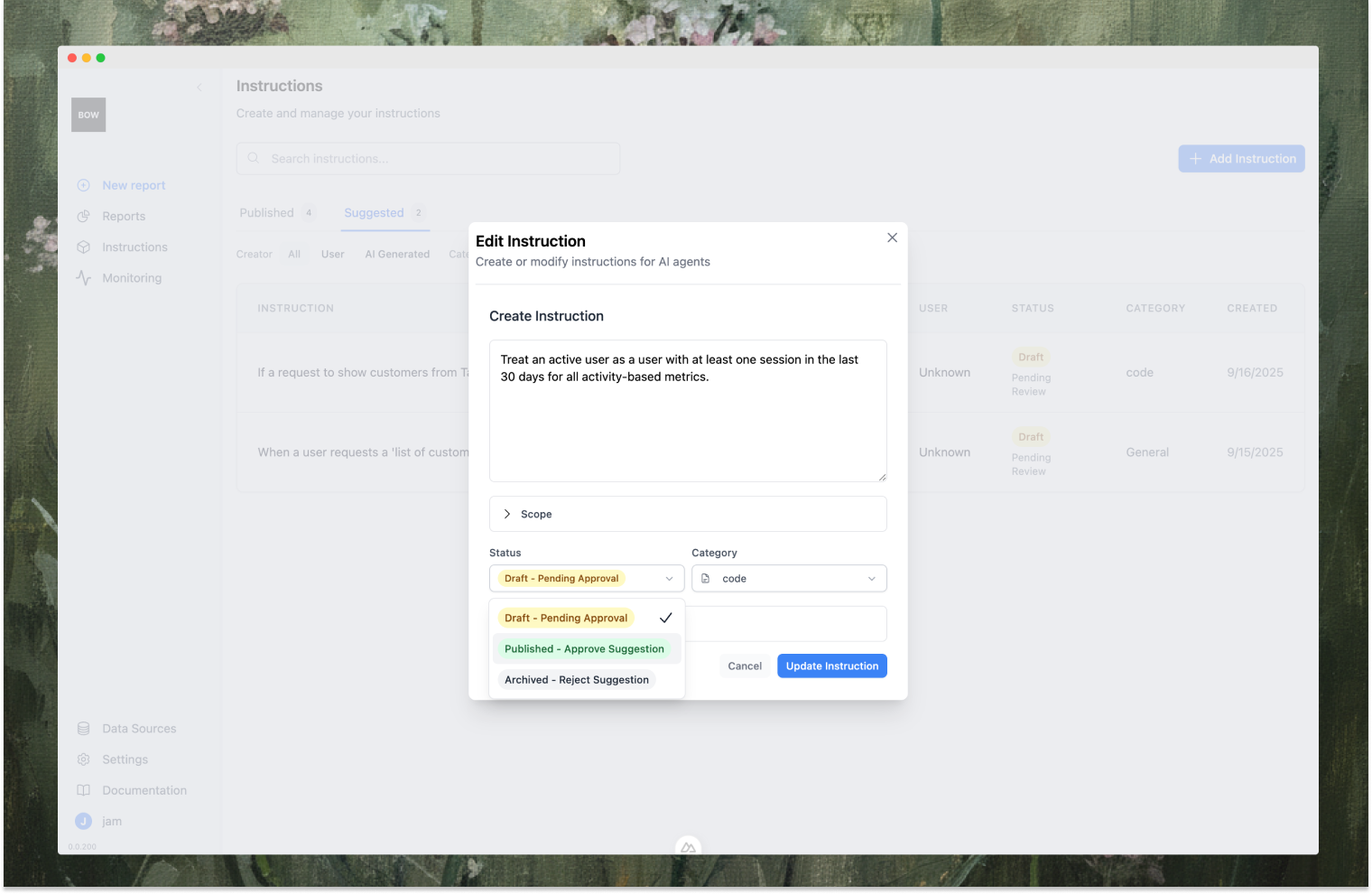- Ambiguous terms: “Active user” might mean different things across teams. Instructions define it precisely.
- Complex calculations: Revenue recognition rules, churn formulas, or cohort definitions need exact specifications.
- Data quality issues: Known data gaps, column meanings, or table relationships that aren’t obvious.
- Business rules: Filters that should always apply, date ranges to use, or tables to prioritize.
- Code standards: Formatting preferences, library usage, or architectural patterns.
Instruction Examples
Here are practical examples of instructions across different use cases:Defining Business Terms
Defining Business Terms
Use instructions to create consistent definitions across your organization.Category: General
Scope: All data sources
Scope: All data sources
Prioritizing Data Sources
Prioritizing Data Sources
Guide the agent to use the right tables and avoid test or staging data.Category: Data Modeling
Scope: Production database
Scope: Production database
Describing Column Meanings
Describing Column Meanings
Explain coded values or non-obvious column semantics.Category: Data Modeling
Scope: Orders table
Scope: Orders table
Calculation Formulas
Calculation Formulas
Specify exact formulas for complex business metrics.Category: General
Scope: Subscriptions data source
Scope: Subscriptions data source
SQL Best Practices
SQL Best Practices
Share data modeling techniques and query optimization tips.Category: Data Modeling
Scope: All data sources
Scope: All data sources
Code Standards
Code Standards
Enforce coding conventions and library preferences.Category: Code
Scope: All data sources
Scope: All data sources
System Instructions
System Instructions
Control agent behavior and tool orchestration
Creating Instructions
Anyone can suggest instructions by clicking ”+ Add Instruction” on the Instructions page. Admins approve or reject suggestions.
- All Data Sources - applies globally
- Specific Data Source - limits to one source (e.g., PostgreSQL)
- Table References - narrows to specific tables
- General - all queries (business rules, definitions)
- Data Modeling - building queries and joins (SQL practices)
- Code - code generation (coding standards)
Managing Instructions
The instructions page shows Published (active) and Suggested (pending) tabs. Filter by creator type or category. Approval (Admin Only): Go to the Suggested tab, click an instruction, review it, change Status to approve or reject, then click “Update Instruction”.AI Auto-Generated Instructions
During report sessions, when you provide clarifications or corrections, Bag of words will automatically detect these as potential instructions and suggest saving them. Example: If you clarify “Treat an active user as a user with at least one session in the last 30 days for all activity-based metrics,” the system will offer to save this as a draft instruction for future use. This ensures valuable domain knowledge is captured organically during analysis and made available across your organization.Autosuggesting instructions can be turned off/on in the AI settings page
Monitoring Instruction Effectiveness
Admins can track instruction performance through the Monitoring dashboard:- Coverage Metrics: See how many queries benefit from instructions
- Instruction Usage: Identify which instructions are used most frequently
- Effectiveness Scores: Monitor whether instructions reduce errors and corrections
- Gaps Analysis: Discover areas where additional instructions could help
